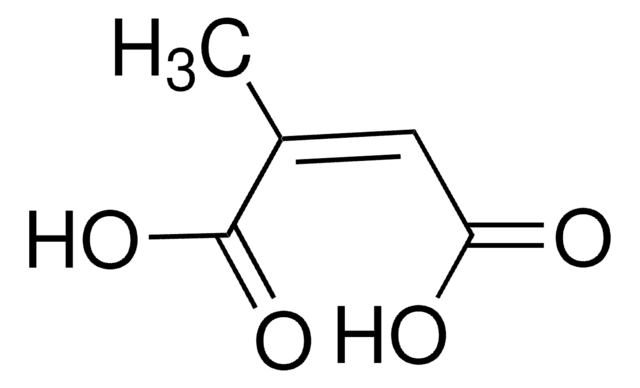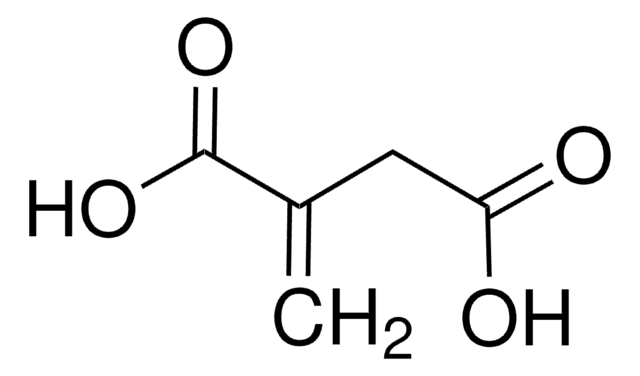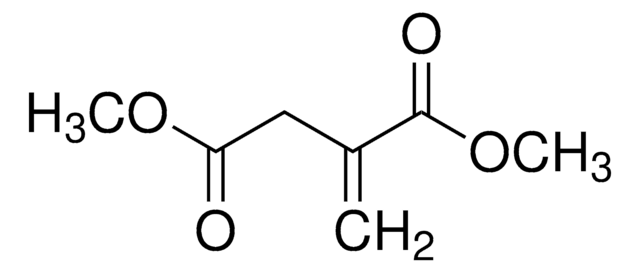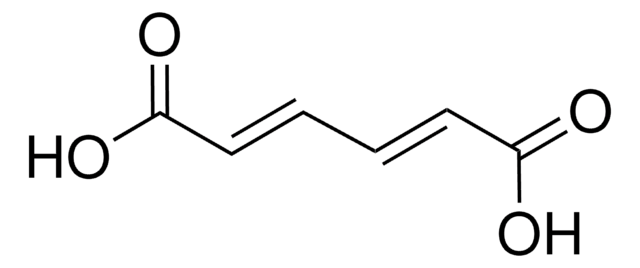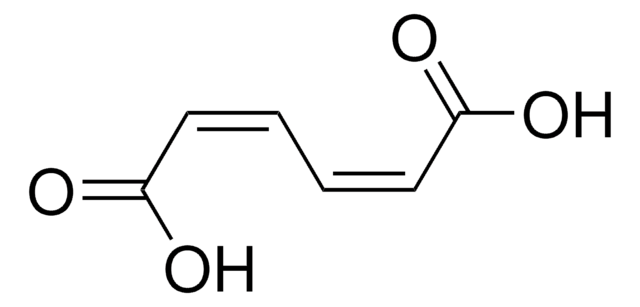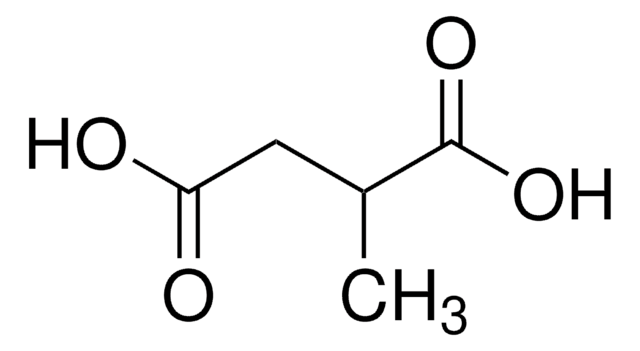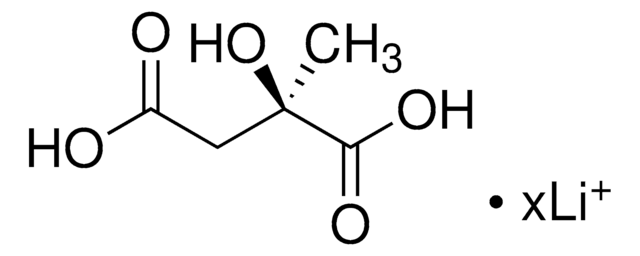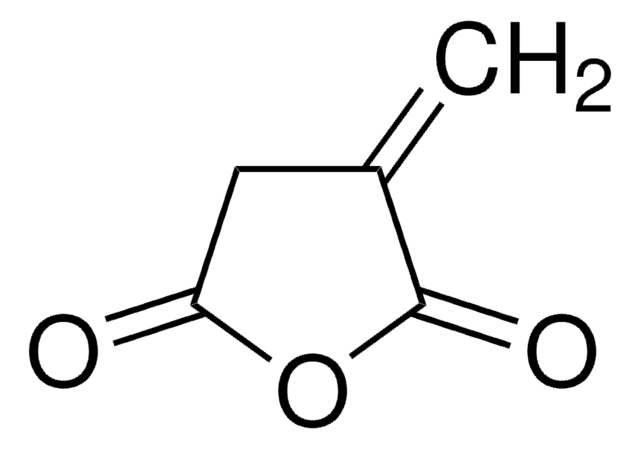131040
Mesaconic acid
99%
Synonyme(s) :
Methylfumaric acid
About This Item
Produits recommandés
Niveau de qualité
Essai
99%
Forme
powder
Pf
200-202 °C (lit.)
Chaîne SMILES
C\C(=C/C(O)=O)C(O)=O
InChI
1S/C5H6O4/c1-3(5(8)9)2-4(6)7/h2H,1H3,(H,6,7)(H,8,9)/b3-2+
Clé InChI
HNEGQIOMVPPMNR-NSCUHMNNSA-N
Vous recherchez des produits similaires ? Visite Guide de comparaison des produits
Catégories apparentées
Application
- Process design and economic analysis of renewable isoprene from biomass via mesaconic acid: Details a sustainable approach for producing isoprene, a crucial chemical in the rubber industry, from biomass-derived mesaconic acid, demonstrating its relevance for green chemistry and material science (Lundberg et al., 2019).
- Green Synthesis of a New Al-MOF Based on the Aliphatic Linker Mesaconic Acid: Structure, Properties and In Situ Crystallisation Studies of Al-MIL-68-Mes: Examines the synthesis and properties of a novel metal-organic framework (MOF) utilizing mesaconic acid, applicable in catalysis, gas storage, and separation technologies (Reinsch et al., 2018).
Code de la classe de stockage
11 - Combustible Solids
Classe de danger pour l'eau (WGK)
WGK 3
Point d'éclair (°F)
Not applicable
Point d'éclair (°C)
Not applicable
Équipement de protection individuelle
dust mask type N95 (US), Eyeshields, Gloves
Faites votre choix parmi les versions les plus récentes :
Déjà en possession de ce produit ?
Retrouvez la documentation relative aux produits que vous avez récemment achetés dans la Bibliothèque de documents.
Les clients ont également consulté
Notre équipe de scientifiques dispose d'une expérience dans tous les secteurs de la recherche, notamment en sciences de la vie, science des matériaux, synthèse chimique, chromatographie, analyse et dans de nombreux autres domaines..
Contacter notre Service technique